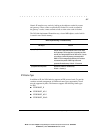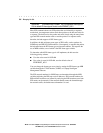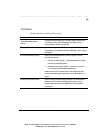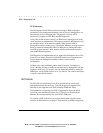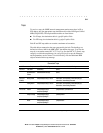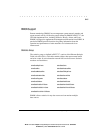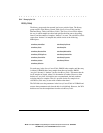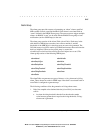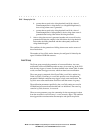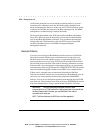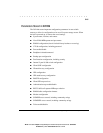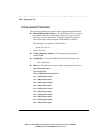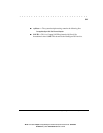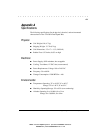
. . . . . . . . . . . . . . . . . . . . . . . . . . . . .
5-15
Compaq Netelligent 2724/2824 Dual-Speed Hub User Guide
Writer:
Chris Seiter
Project:
Compaq Netelligent 2724/2824 Dual-Speed Hub User Guide
Comments:
ile Name:
2824_5.DOC
Last Saved On:
06/25/97 5:32 PM
Alarm Group
The alarm group provides a means of generating an “alarm” when a specified
MIB variable exceeds a specified threshold. Each alarm is associated with an
“event” defined in the RMON Event group. The same event can trigger multiple
alarms. An RMON “event” can be used with the RMON Event group to issue
notifications (such as SNMP traps) to the user.
The alarm group consists of the Alarm Table (alarmTable). Each entry in the
table defines a MIB object to monitor, how often to monitor it, and the
thresholds of the MIB object’s value that cause an event to be generated. The
2824 hub stores alarmTable entries in NVRAM and restores these each time the
hub is re-initialized. When an alarmTable entry is created, the
alarmRisingThreshold and alarmFallingThreshold objects are set to 0. The
Alarm group consists of the following MIB objects:
alarmInterval alarmVariable
alarmSampleType alarmValue
alarmStartupAlarm alarmRisingThreshold
alarmFallingThreshold alarmRisingEventIndex
alarmFallingEventIndex alarmOwner
alarmStatus
The alarmTable can generate two types of alarms: a rising alarm and a falling
alarm. These alarms can result in SNMP traps if the alarm’s associated event in
eventTable is configured to generate traps.
The following conditions allow the generation of rising-alarm events:
1. If the first sampled value obtained after the [alarmTable] row becomes
valid is:
a. less than the rising threshold, then the first time that the sample
value becomes greater than or equal to the rising threshold, a rising-
alarm event is generated.



